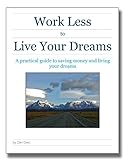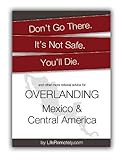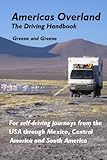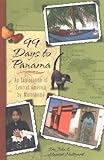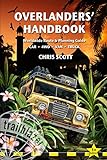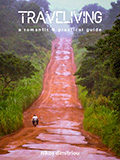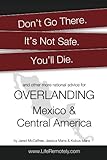Difference between revisions of "United States of America"
(added comment about non-highway (non-taxed) diesel fuel) |
(added info for pets - largely anecdotal and in generalizations) |
||
| Line 179: | Line 179: | ||
==Traveling with pets== | ==Traveling with pets== | ||
''List the entry requirements and anything else required to travel with a pet.'' | ''List the entry requirements and anything else required to travel with a pet.'' | ||
| + | |||
| + | Many hotels and motels have clear policies about staying with pets - ask in advance. Some chain hotels are considered "pet friendly" and some others are "pet tolerant," meaning they will charge extra for pets and reserve a higher amount than simple incidentals for security deposit in the event that any damages are incurred by your pet during the stay. | ||
| + | |||
| + | Some states have requirements about location of pets in the vehicle, some require them to be secured separate from the driver so as to not provide a distraction or hazard. | ||
| + | |||
| + | Most business establishments, especially places where food and drink are served or prepared, forbid pets inside. US Law requires the admittance of official (registered) service animals, such as seeing eye dogs. | ||
=Gas and Diesel price in {{PAGENAME}}= | =Gas and Diesel price in {{PAGENAME}}= | ||
Revision as of 01:51, 24 July 2014
Pan American Highway > United States of America
Currency to display:
Contents
- 1 Visiting United States of America
- 2 Entering United States of America with a Car or Motorbike
- 3 Driving in United States of America
- 4 Gas and Diesel price in United States of America
- 5 Safety and Security Considerations
- 6 Camping in United States of America
- 7 Navigation
- 8 Special Overland Travel interests
- 9 Vehicle Maintenance
- 10 Buy or sell a car or motorbike in United States of America
- 11 References
- 12 Helpful External links
Visiting United States of America
Give a brief overview of what it's like to visit. How easy is the border, how safe is the country, are there great things to see and do, etc.
Entering United States of America with a Car or Motorbike
Correct as of: September 2013
Required Paperwork
List the paperwork required to enter with a vehicle, including number of copies
When shipping a vehicle to the USA from outside the country, as of mid 2013 the following fees apply:
Handling Fee: $60.00 USD
Bill of Lading: $50.00 USD
Documentation Fee: $45.00 USD
ISF 10+2: : $95.00 USD
Temporary Importation of a Foreign Vehicle shipped in to the USA
Summary of process:
- Obtain EPA approval prior to Shipping
- Complete all documentation and forms
The rules:
US Border Protection & Customs - http://www.cbp.gov/trade/basic-import-export/importing-car
Non-residents may import a vehicle duty-free for personal use up to (1) one year if the vehicle is imported in conjunction with the owner's arrival. Vehicles imported under this provision that do not conform to U.S. safety and emission standards must be exported within one year and may not be sold in the U.S. There is no exemption or extension of the export requirements.
Documentation
For CBP clearance you will need the shippers or carrier's original bill of lading, the bill of sale, foreign registration, and any other documents covering the vehicle. You will also be required to complete EPA form 3520-1 and DOT form HS-7, declaring the emissions and safety provisions under which the vehicle is being imported. Vehicles that meet all U.S. emission requirements will bear the manufacturer's label on the engine compartment in English, attesting to that fact. For vehicles that lack such a label, the CBP inspector at the port of entry may require proof of eligibility to import under the EPA exemptions or exclusions specified on form 3520-1.
Vehicles that do not meet all U.S. emission requirements, unless eligible for exemption or exclusion must be imported through an independent commercial importer (ICI). EPA will not allow the vehicles' release to the vehicle owner until ICI work is complete. The ICI will perform any EPA-required modifications and be responsible for assuring that all EPA requirements have been met. Some vehicles cannot be successfully imported or modified by an ICI, however, and in general, ICI fees are very high.
Cleaning the Undercarriage
To safeguard against importation of dangerous pests, the U.S. Department of Agriculture requires that the undercarriage of imported cars be free of foreign soil. Have your car steam-sprayed or cleaned thoroughly before shipment.
EPA
Temporary Vehicle Imports for Non-residents
Motor vehicles and motor vehicle equipment for personal use may be imported for up to one year. The vehicle must be imported in connection with your arrival and it must be owned by you or on order before you depart from abroad. Only individual nonresidents may import a vehicle through a nonresident exemption. There is no Customs bond required, however EPA requires that written approval must be obtained prior to importation.
Requirements:
- Importer must file with U. S. Customs, upon entry, an EPA Form 3520-1 declaring code "O;" and attach the EPA letter of exemption.
- Importer should keep a copy of the EPA approval letter for future proof of EPA exclusion.
Restrictions:
- Importer must be a nonresident;
- Vehicle may not be sold or otherwise transferred to another party in the U.S.;
- Vehicle must be used primarily for personal use by the importer while in the U.S.;
- Use of this exemption is prohibited if the vehicle is to be used primarily to conduct business, or for principle use by persons other than the importer (or spouse of the importer); and
- Vehicle must be exported after one year, or upon the nonresident departing the U.S., whichever comes first.
- Here are the full EPA guidelines to importing a motor vehicle in the USA http://www.epa.gov/otaq/imports/documents/420b10027.pdf
To import your vehicle in the USA you must temporarily import it, this process does not require a Carnet de Passage
Obtain Non-resident Temporary Importation Approval from the EPA, this process can take up to 14 business days to complete and is required before sailing; Required supporting documentation.
a. Non-resident Temporary Importation Approval request - Signed letter (example here)
- Your full name, current foreign address, phone number, Fax number, and email address (if applicable)
- Your U.S. address, phone number, Fax number, and email address (if applicable)
- Vehicle year, make, model and Vehicle Identification Number
- A statement explaining the reason for your visit to the United States. (work/school/vacation).
- The date of the importation
- Location of the vehicle and the Nonresident at the time of request.
- The duration of the importation.
- Proof of ownership (Registration or title documents from country of origin).
- Copy of passport
b. Supporting documents
- Copy of Vehicle Registration certificate
- Copy of passport
- The above can be emailed to: Imports@epa.gov
Documentation for Customs / your clearing agent
- Power of attorney for customs purposes (the agent should provide paperwork)
- Copy of the Non-resident Temporary Importation Approval from the EPA (as above)
- EPA complete declaration forms 3520-1 (EPA) (form here)
- DOT HS-7 – A Declaration re Motor Vehicle Safety Standards. Tick box (5) stating that the vehicle does NOT comply with USA standards and that you will export it within 12 months.
- CBP Form 3299 Declaration for free entry of unaccompanied articles Tick box Code ‘O’ stating imported by a non resident for personal use for a period of one year. (form here)
- Bill of Landing
- Supplemental declaration for unaccompanied personal & household effects
- To whom it may concern statement for customs (example here)
- Copy of flight itinerary showing that you will arrive in the USA around the same time as the vehicle
- Copy of passport
Please see This post for links to examples of letters and forms
Process at border
(To check if you need a travel Visa for United States of America, application instructions and fees see: United States of America Visa online application at VisaHQ.com)
Briefly describe the process at the border to enter with a vehicle
Cost of entry
State the cost for a vehicle to enter
Permitted length of stay
State the permitted length of entry for the vehicle
Extension of stay
Describe the process to extend the permitted length of entry for the vehicle, if possible.
Storing a vehicle and temporarily leaving the country
Describe if/how a vehicle can be stored, and for how long.
Also mention if the owner / temporary importer can leave the country while the vehicle is in storage.
Exiting with a vehicle
Describe the paperwork requirements and process at the border to exit.
Driving in United States of America
Insurance requirements
Insurance is technically mandatory in the USA for any driver. This applies to most states but not all. We've never been asked for it. The insurance really insures you to drive any car at all.
Cost of insurance
We have been dealing with the ex-pat department at AIG Insurance. Dealing directly with the underwriter so this is much easier than the normal call center staff. We have a 1 year policy with the cover we need for under $800.00 USD (UK Registered Land Rover). Some notes for those of you who also need it. You may not need un-insured and under-insured motorist bodily Injury (BI) cover as its likely your home travel policy will cover this. Ours does so don’t waste your money on that. You can also get much lower lever of cover based on the minimum requirements for some states in the USA. You can check out the lowest requirements by googling.
As an example we got fully comprehensive cover $20,000.00 USD including zero excess glass cover with $1,000.00 USD excess/deductible for collisions, property ($100,000.00 USD), bodily injury cover ($300,000.00 USD for others) for the price mentioned. This is a high level of cover for the USA which is nowhere near the cover levels in the UK !
If you only want the minimum you can go a lot lower than we have. If you just get the legal minimum and the price drops a lot !
If you have young adults with you the premium will be higher as they insure the car for any driver including anyone in the household that might drive it, even if they do not. So if you have a 17yo with you it will be expensive. You need to give them an address but this is used for USA rating so it can be ANY address in the USA. They do not send anything there. Its all done via Email and Phone. You will need scans of all documents for the car and you.
Where to purchase insurance
Insurance can be obtained quite easily from a number of insurance companies:
- Progressive
- State Farm
- AIG - The company is AIG and the number is 800-343-5761 There’s a few people there but if you get hassle ask for Kathy. Sometimes they are on voice mail. The will insure any car from anywhere.
- Freeway
Driving license
Technically you need an IDP but really you do not. Its easier if you have one but we have NEVER been asked for one. Florida changed the law to force you to have one but this is illegal under the Geneva Convention so the law was repealed in April 2013. However the law was not changed so you could get into trouble without one but it is NOT an offense any longer. Do not worry about Florida. I'd get one if you can and if not I'd not worry about it. I just renewed mine as we were passing the post office at home. If we were not passing I would not have bothered.
Driving side of road
Right.
RHD vehicles can be driven in United States of America without a problem.
Mandatory items in vehicle
State any mandatory items that must be carried in the vehicle. (i.e. safety triangle, first aid kit, fire extinguisher, etc.)
Vehicle registration, prof of insurance, and the drivers driver license.
Roads
General Road quality
Give a brief description of the general road quality. Mention if one way streets are common.
Road signs
Briefly describe the overall quality & existence of road signs for directions and hazards.
Toll roads
List the frequency and approximate price of toll roads.
Bribery in United States of America
Do not even think about bribing it will only make the situation worse.
Checkpoints
The boarder patrol operates random check points with in 60- miles of the international boarders looking for people illegally entering the country and drugs. Most check points will have work dogs sniffing the vehicle for illegal drugs. The Boarder Patrol web site is at http://www.cbp.gov/border-security/along-us-borders/overview. Vehicles with foreign license plates may have to show passports and proof of legal entry, but not always.
California has agricultural check points to mitigating the transportation of invasive species. For the most part they will ask if you have any fruits or vegetables, look at them for signs of fruit flies and send you on you're way if nothing were found. If there are signs of invasive species, they will throw the items in the trash and you are free to proceed. Their web site is http://www.cdfa.ca.gov/plant/pe/ExteriorExclusion/borders.html
Traveling with pets
List the entry requirements and anything else required to travel with a pet.
Many hotels and motels have clear policies about staying with pets - ask in advance. Some chain hotels are considered "pet friendly" and some others are "pet tolerant," meaning they will charge extra for pets and reserve a higher amount than simple incidentals for security deposit in the event that any damages are incurred by your pet during the stay.
Some states have requirements about location of pets in the vehicle, some require them to be secured separate from the driver so as to not provide a distraction or hazard.
Most business establishments, especially places where food and drink are served or prepared, forbid pets inside. US Law requires the admittance of official (registered) service animals, such as seeing eye dogs.
Gas and Diesel price in United States of America
Last updated: December 2013
Currency and unit to display:
Gas and diesel prices vary across the country, and change quickly.
| Gasoline Grade | Price |
|---|---|
| Regular (85) | $3.74 USD per Gallon (US)[1] |
| Diesel | $3.60 USD per Gallon (US) to $5.00 USD per Gallon (US) |
Link to external websites with price & quality information, if available.
Gas and Diesel Availability / Frequency
Lower 48-states: In general, local gas shortages only happen in if there is a catastrophic weather event. For the most part gas stations are less than 50-miles apart. There will be blue information signs posting where fuel stations are further apart than this.
Death Valley California use to have a 80-mile stretch without gas. It is best to stay topped off in desert regions. On Highway 395, going through eastern Oregon / Washington there is a 300-miles without gas.
In many states, especially ones with strong agricultural/forestry/mining production, there may be 2 prices advertised for diesel in rural areas - in these cases, the lower priced fuel has not had the state fuel taxes added into the price as the vehicles using it are not intended for road use (no highway tax, road tax, department of transportation tax, etc.). The definition of "non-road use" is not off-road, overland, or off-highway, but rather exclusively non-road use like tractors, farm machinery, logging and or mining equipment, and vehicles that do not convey on roads unless trailer-ed. This fuel usually has a dye (often red) to indicate presence in the fuel tank, which may be inspected by law enforcement personnel. When in doubt, ask - there are expensive fines for using improper fuel on public roadways.
Gas and Diesel Quality
Sulfur content of diesel is 10ppm and winter grade is automatically introduced in filling stations. Shell seemed to do this first.
Safety and Security Considerations
The United States has the 24-hours a day, 7-days a week never shut down, never impede traffic philosophy. As always, it best to drive slower at night or below the posted speed limits.
Vehicle parking
Discuss if vehicles can be parked on the street, if they are considered "safe" at night. If vehicles can not be parked on the street, list the other options that exist.
Special driving considerations
A List of special things to be careful of (i.e. Unsigned speed bumps, abnormal road rules, people or animals on the road, etc.).
List any roads that are not recommended to drive for safety or other security reasons.
Security advisories and information
- Country Specific Information - U.S. Department of State
- Travel Reports and Warnings - Foreign Affairs and International Trade Canada
- Travel advice by country - Foreign and Commonwealth office (U.K.)
- Travel Advice for United States of America - Australian Department of Foreign Affairs and Trade
Camping in United States of America
Organized "pay" camping is as common as hamburgers and hotdogs in North America. Facilities commonly found at these campsites vary with price and location. The most expensive I have seen were $1,000.00 USD a month at big city California beach locations with full hook-ups, and swimming pool, rec room and washing machines. Middle of the road places are around $25.00 USD to $30.00 USD per night with full hook-ups or around $350.00 USD to $500.00 USD a month. Full hook-ups, is electric, water, and sewer. If they allow tents, the cost is about half the full hook-up cost.
Keep in mind RV-parks are not campgrounds. I was rudely reminded of that in Las Vegas Nevada. Because of the numerous compromised people visiting Las Vegas their rules are very discriminatory to keep things to a manageable level.
"Wild camping" or "boondocking" is officially called "Dispersed Recreation Camping" by The U.S. Department of the Interior's Bureau of Land Management or BLM for short. A well organized web page at http://www.boondockingguide.com can answer all you're questions on "wild camping" or really just "camping."
"Roadside" camping or "car camping" or "stealth camping "is very common. You are allowed to stay at most major interstate highway road side rest areas for 8-hours. Truckers stay there all night arriving just before dark and departing before sunrise. It can be hit or miss finding a place towards midnight near major cites. Rest areas have bathrooms with drinking water, pick-nick tables and often a place to fill up water bottles. The first rest area in the state will have free state maps and tourist information. Coffee is served on major holidays to promote safety.
Over night sleeping at truck stops is very comfortable. They generally have showers, laundry rooms, food and more for the truck drivers "home away from home" over night stay.
Wall-Mart is also a common place for transit RV (recreational vehicle) traveler to park over night. Some Wall-Marts do not allow over night parking. A GPS waypoint list is maintained at www.poi-factory.com/ and http://halberstadt.macmate.me/Walmart/Walmarts.html of locations that do and do not allow overnight parking.
The U.S. Department of the Interior's Bureau of Land Management (BLM), manages a very high percentage of non private land in western USA. Their main web site is http://www.blm.gov/wo/st/en.html. Camping information is found in the local BLM field office web site under recreation. They have downloadable maps and end less amount of information.
The most popular BLM camping areas, by number of winter visitors, are the BLM LTVAs, short for Bureau of Land Management Long Term Visitor Areas. For a fee of several hundred dollars visitors may camp for as long as seven months. See: http://www.blm.gov/ca/st/en/fo/elcentro/recreation/ltvas.html and http://www.blm.gov/az/st/en/prog/recreation/camping.html
Camping guide books
There are many campground directories for RV-parks. None of them are great at covering all camping locations. The priority of these directories is on paid commercial RV and camping locations. A internet search of "campground Directory," will give you pages of directories. Woodalls, Good Sam RV Travel Guide & Campground Directory are a few. They are available at Camping World and RV supply stores and some sporting goods stores.
A non commercial web site that excels in GPS GPX files of national forest camping locations is located at: http://www.uscampgrounds.info/
The Escapees RV Club - http://www.escapees.com/Default.aspx has a directory called Day's End. The Directory has boondocking and low-cost parking opportunities. Day's End listings are submitted by traveling members.
Drinking water
Tap Water is safe to drink in the United States.
In general, all tap water is safe to drink unless posted, "Non Pot-able Water" (meaning do not drink it).
Paper maps
Reise Know-How are amoung the best paper maps. Purchase paper maps before arriving in United States of America
GPS Maps of United States of America
The following web page sums up Map Makers in the USA. http://www.gpsinformation.org/dale/mapmakers.htm
GPS co-ordinates for camping, propane, gas, repairs, etc. in United States of America
There is a overwhelming number of web sites to get GPS coordinates. Here is a few that stand out above the rest.
http://www.uscampgrounds.info/statemaps.html http://www.campfone.info/ www.poi-factory.com/
- USA - SOUTHWEST AND GRAND CIRCLE - A trip through the US from Mexico to the Grand circle with gps locations and prices recorded.
Special Overland Travel interests
List any special items / places that are popular with Overlanders
Travel Guide Books
Vehicle Maintenance
Dealers
4x4s / Trucks
- Toyota Global Dealer Locator
- Land Rover International Dealer Locator
- Mercedes Benz International (select country on bottom right)
- Jeep International site locator
Motorbikes
Local Garages
Add known good mechanics here.
Buy or sell a car or motorbike in United States of America
Buy
Do not confuse the right to own a vehicle with the right to operate a vehicle. Nearly anyone in the world can own a vehicle in the United States; however it must be properly insured and licensed to operate the vehicle on public roads.
Visit the Department of Motor Vehicles (DMV) web sites for the rules in the state you are planing to make the purchase.
Every state has different requirements and registration cost. Smog or vehicle safety checks are often required if purchasing a vehicle in and or near a big city. Rural areas often do not require smog or safety checks.
Once a vehicle is properly licensed and insured in any state you have the right to drive it in any state as long as you are transiting through and or visiting the state.
If you become a resident of another state, and primarily operate the vehicle in that state, you must re-register the vehicle in that state. In other words, vehicles are suppose to be licensed and registered and insured in the state they will be primarily operated. This should not be an issue if you are a tourist.
If you are planing on purchasing a vehicle to operate, I would first get the vin number, make, model and year of the vehicle you plan to purchase, go to an insurance company and get an estimate on insurance cost.
Before you even consider looking at a prospective vehicle ask the owner / seller to see the title and check to see that the vin number located on the drivers side dash, from the outside of the vehicle looking in, matches the title number.
Check to see if the owner / sellers drivers license is the same name the one the title. If not, what gives him the right to sell the vehicle?
Look at the title to see if someone else has signed the release of liability line and date. This will happen if someone bought the vehicle to resell and did not register it. This is a sign there may be fines when trying to register the vehicle.
If purchasing from a private party, it is best to do all of the business transactions at the Department of Motor Vehicles (DMV), with both buyer and seller present, PERIOD. NO EXCEPTIONS!
Yes, states have procedures so the owner / sellers and buyer do not have to be present at the same time, but, a big big but, you are asking for trouble and return trips to the DMV if you do not have the seller and buyer at the DMV at the same time to complete the paper work.
Do not give the seller the money until after the Department of Motor Vehicles person checks that it has a clear title, smog check complied with, and the vin number matches the number on the title, and there is no other issues.
Then pay the owner and pay the DMV fees. Yepee, you now have a vehicle but still must pay the insurance.
Next, after the purchase, contact the insurance company and get it insured. The insurance company will notify the DMV the vehicle is properly insured and give you prof of insurance paper work that must be kept in the car with the vehicle registration. If the DMV dose not see that the vehicle is insured in a short amount of time, a computer record will go against the vehicle registration so police will be able to impound the vehicle for driving without insurance.
Sell
Keep in mind you may use a vehicle as a tourist for one year, that may not be able to import. So do not think that you can legally import the vehicle even though it is in the country.
The following is a copy and past from U.S. Customs and Border Protection web site: http://www.cbp.gov/trade/basic-import-export/importing-car
"Exceptions The following vehicles need not conform to emission or safety requirements but may NOT be sold in the U.S. and may require EPA and DOT declarations:
Those imported by nonresidents for personal use not exceeding one year. The vehicle must be exported at the end of that year - there are no exceptions or extensions."
Also read "Registering a foreign registered vehicle, car or motorcycle in the U.S. with the Department of Motor Vehicles" at https://help.cbp.gov/app/answers/detail/a_id/425/~/registering-a-foreign-registered-vehicle,-car-or-motorcycle-in-the-u.s.-with
This is a important point from the referenced web site above. "If you bought or were given an imported vehicle from someone in the U.S., and they did not clear it through CBP before selling or giving it to you, there could be a problem. It is illegal to sell an imported vehicle that has not been formally entered, and it is subject to seizure."
References
Links to the source of any information - blogs or discussion forums, etc.
Helpful External links
Add any helpful external links here.
- United States of America: Visa and Passport requirements | World Travel Guide
- Health Information for Travelers to United States of America - Center for Disease Control and Prevention
- United States of America travel guides at wikivoyage
- United States of America - Wikipedia, the free encyclopedia

![United States Classic [tubed] (national Geographic Ref...](https://images-na.ssl-images-amazon.com/images/I/610tdbQPDAL._SL160_.jpg)


